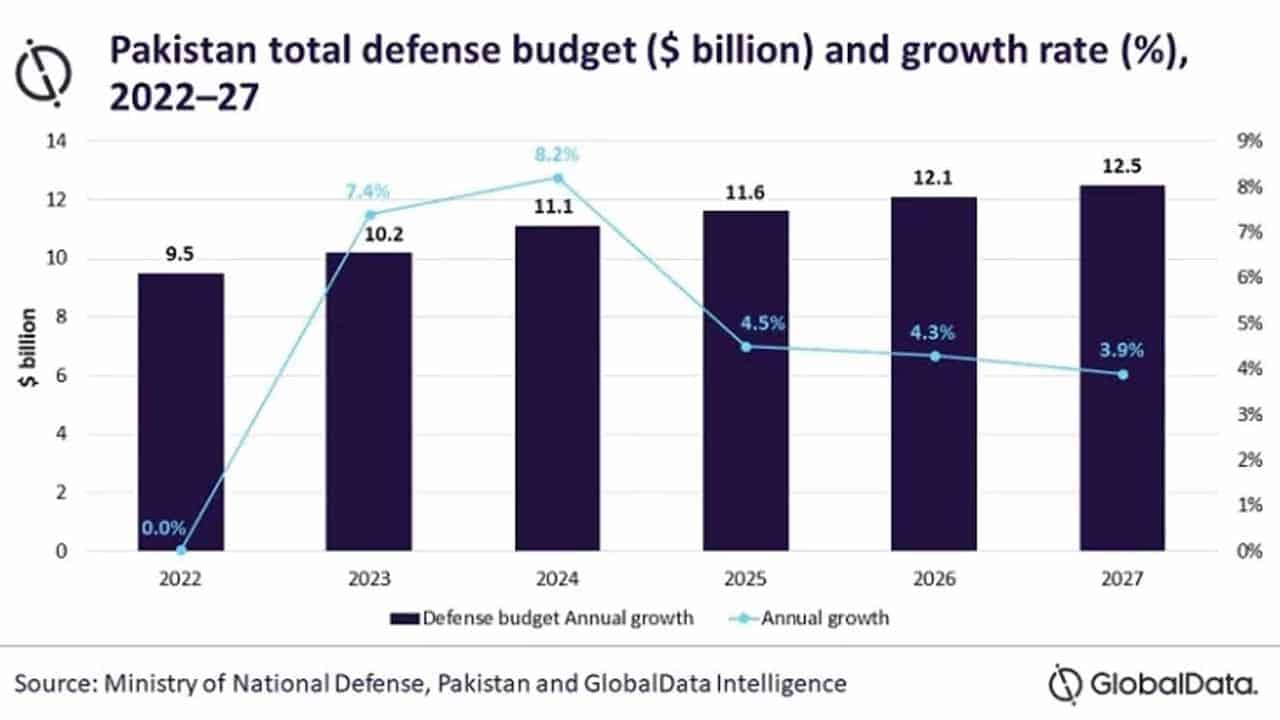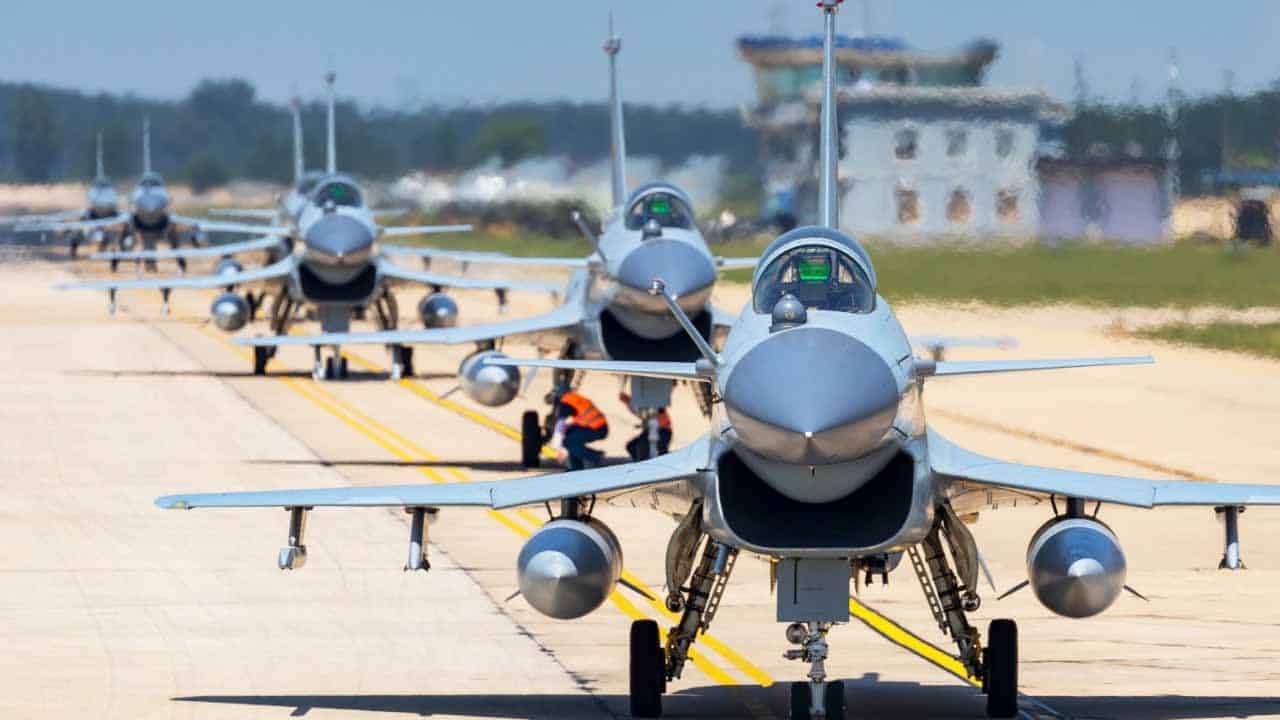Pakistan has been enhancing its Defence Modernisation to protect its territorial integrity and state sovereignty due to its proximity to hostile neighbors. According to an estimate by data and analytics company GlobalData, Pakistan’s defense-bought budget would increase at a compound annual growth rate (CAGR) of 5.2% from $10.2 billion in 2023 to $12.5 billion in 2027 because of military modernization and a desire to build effective deterrence.
A J-10C fighter jet at the Zhuhai Air Show in 2021 in Zhuhai, Guangdong Province, south China. The Pakistan Air Force staged an installation ceremony for the initial batch of six J-10CE fighters on March 11, 2022. Credit: Future Publishing/Costfoto via Getty Images.

“The volatile nature of the current internal, regional, and international environment has exasperated Pakistan’s security challenges,” says Ruble Sharma, a GlobalData aerospace and defense analyst. Pakistan has approved ambitious military modernization plans to buy military equipment to increase its capabilities despite increasing debt and economic uncertainties and is anticipated to do so over the predicted period.
According to GlobalData’s most recent report, “Pakistan Defense Market Size and Trends, Budgets Allocation, Regulations, Key Acquisitions, Competitive Landscape and Forecast, 2022-2027,” Pakistan’s defense spending in 2022 will be $9.5 billion, up 4.7% from 2021 and reflecting a CAGR of 5.2% from 2023 to 2027.
China has supplied the most latest generations of its J-10 multirole tactical fighter aircraft to Pakistan to improve its defense capabilities. In the future, Pakistan also intends to introduce the JF-17 fighter’s block III variant. In addition, the current program for eight Type-041 submarines, including four that will be manufactured in Pakistan under license, is scheduled for delivery in 2022–2028. There are numerous additional existing or upcoming programs for the acquisition of artillery and military drones.
Sharma continues: “Pakistan has been leaning on China to procure multiple military pieces of equipment. The J-10 will strengthen its conventional deterrence posture, by replacing some of Pakistan Air Force’s aging fleet of Mirage III ROSE fighters and could potentially play a role in low-level maritime strike operations. They are expected to address the asymmetries in the region, enhancing the conventional capabilities of Pakistan.”
The Biden administration also gave the go-ahead for Pakistan to maintain its F-16 fighter jet fleet after a four-year break. The anticipated transaction will not entail any new capabilities, weapons, or munitions, according to a notification from the US Defence Security Cooperation Agency (DSCA). “The US DSCA’s decision to let Pakistan Air Force F-16 operate helps Pakistan deal with an aging fleet and limited resources that are preventing direct procurement and significant upgrade plans,” writes Sharma in his conclusion. The nation will be in a tough position to maintain or update its fleet if it continues to have financial problems exacerbated by natural disasters, and the deterioration of the nation’s security system could result in more security issues in the area.






